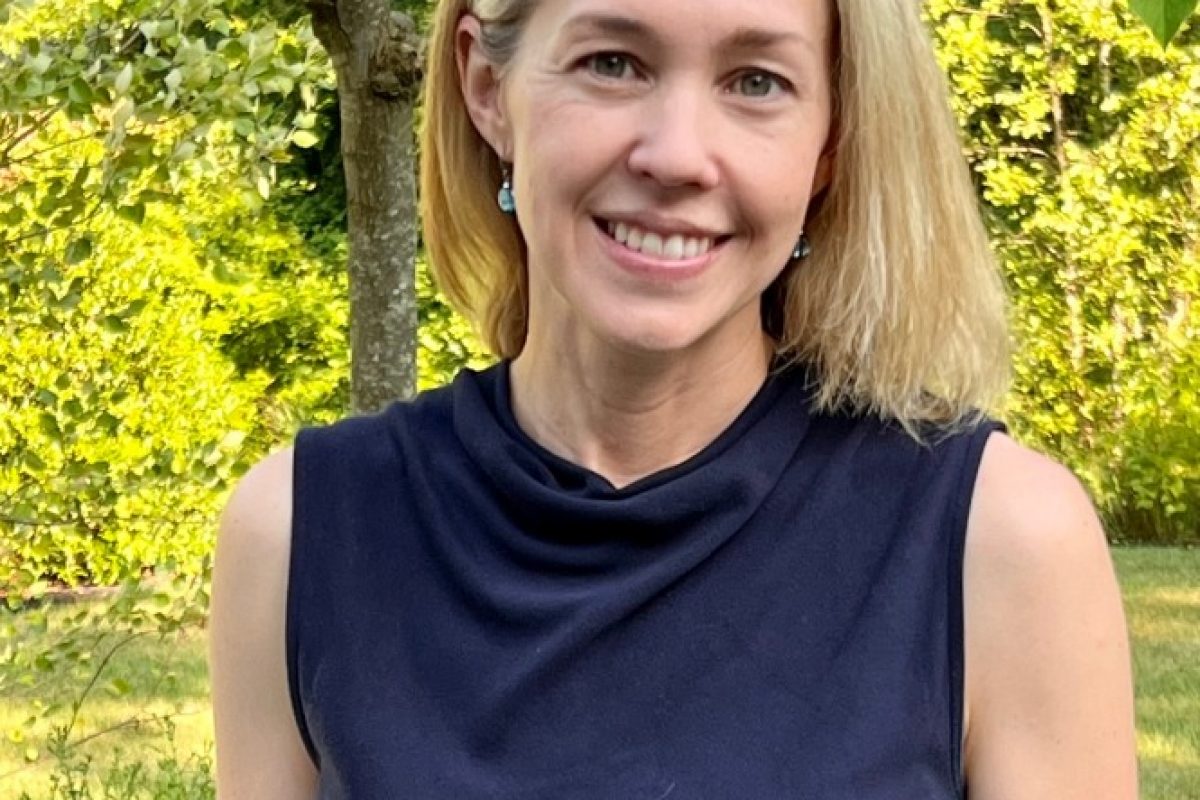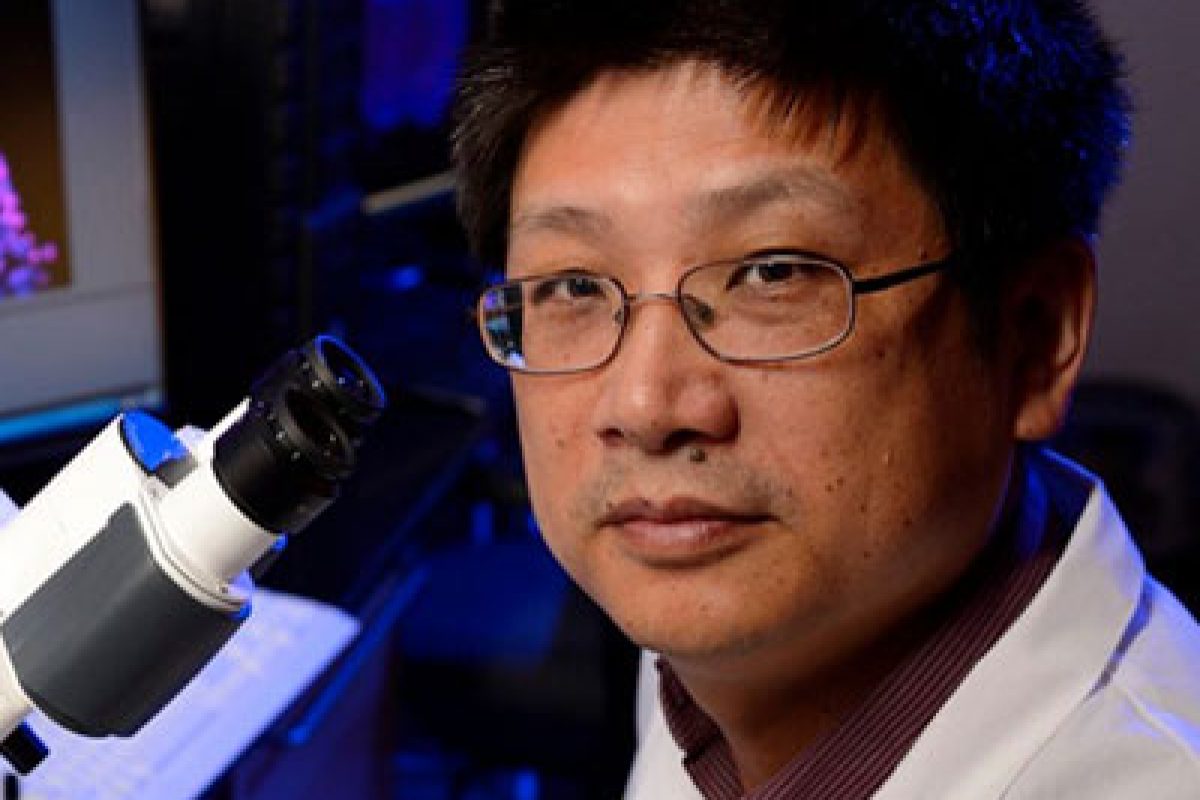Contact Information
The Perelman School of Medicine at the University of Pennsylvania
Department of Cell and Developmental Biology
9-101 Smilow Center for Translational Research
3400 Civic Center Blvd
Philadelphia, PA 19104-6059
Office: 215-898-0550
Lab: 215-573-7548
capelson@pennmedicine.upenn.edu
Deciphering Mechanisms of Genome Mis-folding In Cancer
Our lab deploys data-rich experimental techniques to elucidate the role of genome mis-folding in controlling oncogenic gene expression programs. Specifically, we are interested in moving beyond the status quo to understand how oncogenic subversion of lineage-determining transcription factors set topology of cancer genome. To tackle this question, we combine genomics and super-resolution imaging and focus on investigating molecular mechanisms of genome mis-folding in breast and blood cancers. These mechanistic studies aim to identify precise epigenetic vulnerabilities of cancer cells and guide treatments disrupting cancer cells’ transcriptional addiction.
Representative Publication:
Oncogenic Notch Promotes Long-Range Regulatory Interactions Within Hyperconnected 3D Cliques. Petrovic J*, Zhou Y*, Fasolino M, Goldman N, Schwartz GW, Mumbach MR, Nguyen SC, Rome KS, Sela Y, Zapataro Z, Blacklow SC, Kruhlak MJ, Shi J, Aster JC, Joyce EF, Little SC, Vahedi G, Pear WS, Faryabi RB Molecular Cell. 2019;73(6):1174-90 e12
Determining Epigenetic Mechanisms Of Resistance To Targeted Therapies
Targeting oncogenic drivers of cancers commonly leads to drug resistance. Mechanisms of acquiring resistance to oncology drugs mostly remain unknown, partly due to the limitations of population-based assays in elucidating heterogeneity of drug-naive and complexity of drug-induced tumor evolution. Using single-cell genomics and imaging, we study how heterogeneity and plasticity of transcriptional dependencies confer resistance to targeted therapeutics such as Notch inhibitors.
Representative Publication
TooManyCells Identifies And Visualizes Relationships Of Single-cell Clades. Schwartz GW, Zhou Y, Petrovic J, Fasolino M, Xu L, Shaffer SM, Pear WS, Vahedi G, Faryabi RB Nature Methods, 2020; 17: 405-413
Innovating Computational Methods To Enable Cancer Discovery
Our lab innovates statistical and machine learning approaches to accelerate discovery of novel therapeutics and biomarkers by elucidating complexity and heterogeneity of tumors. Recently, we have developed a computational ecosystem for mapping molecular and spatial heterogeneity in tumors. As part of the Center for Personalized Diagnostics, we also mine cancer patient genotypic/phenotypic data to improve patient health. patient health.
Representative Publication:
Classes of ITD Predict Outcomes in AML Patients Treated With FLT3 Inhibitors. Schwartz GW, Manning B, Zhou Y, Velu P, Bigdeli A, Astles R, Lehman AW, Morrissette JJD, Perl AE, Li M, Carroll M, Faryabi RB Clinical Cancer Research. 2019;25(2):573-83
Research Interest
Cancer is typically considered a genetic disease. However, recent progress in our understanding of epigenetic aberrations in cancer has challenged this view. Overarching goal of our lab is to understand epigenetic mechanisms of transcriptional addiction in cancer and exploit this information to advance cancer therapeutics.
To pursue this objective, we use cutting-edge chromatin conformation capture, high-content imaging, single-cell epigenomics, functional genomics, and combine these technologies with our expertise in computational sciences to systematically explore: i) how epigenetic control of gene expression is disrupted in cancer, ii) why transcriptional addiction can develop, and iii) how heterogeneity and plasticity of transcriptional dependencies enable drug resistance.
1. Role of STAMP2 (STEAP4) in modulating inflammatory and metabolic responses in adipocytes: My interest in metabolism began while I was a graduate student in the laboratory of Gökhan S. Hotamisligil. My work in the Hotamisligil lab specifically focused on the role of six-transmembrane protein of prostate 2 (STAMP2; also known at STEAP4). We because interested in STAMP2 from a gene expression study that I performed at the start of my graduate training, in which we found that STAMP2 expression was induced by the inflammatory cytokine TNFα and suppressed by thiazolidinediones (Endocrinology, 2004). During the rest of my graduate training years, I worked to elucidate the function of STAMP2 in adipocytes, using both cell culture and mouse models. We found that STAMP2 acts to prevent inappropriate activation of inflammatory pathways in adipocytes, thereby contributing to the maintenance of systemic insulin sensitivity (Cell, 2007). We also published an influential review article that has been cited over 4000 times to date.
Wellen KE, Uysal KT, Wiesbrock S, Yang Q, Chen H, Hotamisligil GS. Interaction of tumor necrosis factor-alpha- and thiazolidinedione-regulated pathways in obesity. Endocrinology. 2004 May;145(5):2214-20. PubMed PMID: 14764635.
Wellen KE, Hotamisligil GS. Inflammation, stress, and diabetes. J Clin Invest. 2005 May;115(5):1111-9. PubMed PMID: 15864338; PubMed Central PMCID: PMC1087185.
Wellen KE, Fucho R, Gregor MF, Furuhashi M, Morgan C, Lindstad T, Vaillancourt E, Gorgun CZ, Saatcioglu F, Hotamisligil GS. Coordinated regulation of nutrient and inflammatory responses by STAMP2 is essential for metabolic homeostasis. Cell. 2007 May 4;129(3):537-48. PubMed PMID: 17482547; PubMed Central PMCID: PMC2408881.
The hexosamine biosynthetic pathway in coordination of metabolic and signaling pathways: After obtaining my PhD, I joined Craig B. Thompson’s laboratory, to further develop my expertise in cellular metabolism and gain training in the re-emerging field of cancer metabolism. I sought to understand how cells gauge nutrient availability and, to this end, investigated the role of the hexosamine biosynthetic pathway, which generates the glycosyl donor UDP-GlcNAc. We found that glucose utilization in the hexosamine pathway impacts growth factor receptor N-glycosylation and surface presentation, and that this serves as a mechanism to coordinate glucose and glutamine metabolism to support proliferation in hematopoietic cells (Genes and Development, 2010). More recently, we have reexamined the regulation of the hexosamine pathway under conditions of nutrient deprivation, identifying that pancreatic cancer cells employ a little studied hexosamine salvage pathway in response to glutamine deprivation to feed UDP-GlcNAc pools (eLife, 2021).
Wellen KE, Lu C, Mancuso A, Lemons JM, Ryczko M, Dennis JW, Rabinowitz JD, Coller HA, Thompson CB. The hexosamine biosynthetic pathway couples growth factor-induced glutamine uptake to glucose metabolism. Genes Dev. 2010 Dec 15;24(24):2784-99. PubMed PMID: 21106670; PubMed Central PMCID: PMC3003197.
Wellen KE, Thompson CB. A two-way street: reciprocal regulation of metabolism and signalling. Nat Rev Mol Cell Biol. 2012 Mar 7;13(4):270-6. PubMed PMID: 22395772.
Campbell SL and Wellen KE. Metabolic Signaling to the Nucleus in Cancer. Mol Cell, 2018 Aug 2; 71(3): 398-408. PMID: 30075141.
Campbell SL, Mesaros C, Izzo L, Affronti H, Noji M, Schaffer, BE, Tsang T, Sun K, Trefely S, Kruijning S, Blenis J, Blair IA, Wellen KE. Glutamine deprivation triggers NAGK-dependent hexosamine salvage, eLife, 2021
Acetyl-CoA at the interface of lipid metabolism and epigenetics: roles in cellular and organismal physiology: My interest in metabolic regulation of the epigenome, which constitutes a major current focus on my lab, also developed during my postdoctoral work in the Thompson lab. When I joined the Thompson lab in 2006, the lab had been studying acetyl-CoA metabolism and its role in supporting tumor growth through de novo lipid synthesis. Whether acetyl-CoA levels are also regulatory for lysine acetylation had been speculated and evidence for this had emerged in yeast, but little to no evidence for this possibly existed in mammalian cells. We found that acetyl-CoA production by ATP-citrate lyase (ACLY) is critical for maintaining overall levels of histone acetylation in multiple mammalian cell types, including adipocytes. This initial study, published in Science, was one of the first papers demonstrating metabolic control of the epigenome in mammalian cells. Since starting my own laboratory in 2011, we have extensively investigated the role of acetyl-CoA metabolism in regulation of lipid metabolism and the epigenome. We reported the development of Aclyf/f mice and MEF cell lines, as well as Adiponectin-Cre;Aclyf/f (adipocyte-specific KO) mice (Cell Reports, 2016). Using these reagents, we demonstrate that upregulation of ACSS2 and engagement of acetate metabolism is a key mechanism of compensation to supply acetyl-CoA for histone acetylation and lipid synthesis in the absence of ACLY, in vitro and in vivo. We further found that fructose metabolism to acetate produced by gut microbiota represents a key source of acetyl-CoA for hepatic lipogenesis (Nature, 2020). We also demonstrated that ACLY is crucial for sucrose-induced activation of ChREBP in adipocytes and in sustaining systemic metabolic homeostasis during carbohydrate feeding (Cell Reports, 2019).
Wellen KE, Hatzivassiliou G, Sachdeva UM, Bui TV, Cross JR, Thompson CB. ATP-citrate lyase links cellular metabolism to histone acetylation. Science. 2009 May 22;324(5930):1076-80. PubMed PMID: 19461003; PubMed Central PMCID: PMC2746744.
Zhao S, Torres AM, Henry R, Trefely T, Wallace M, Lee JV, Carrer A, Sengupta A, Kuo YM, Frey AJ, Meurs N, Viola JM, Blair IA, Weljie A, Snyder NW, Andrews AJ, Wellen KE. ATP-citrate lyase controls a glucose-to-acetate metabolic switch, Cell Rep, 2016, Oct 18;17(4):1037-1052. Pubmed PMID: 27760311; PubMed Central PMCID: PMC5175409
Fernandez S, Viola JM, Torres A, Wallace M, Trefely S, Zhao S, Affronti HC, Gengatharan JM, Guertin DA, Snyder NW, Metallo CM, Wellen KE. Adipocyte ACLY facilitates dietary carbohydrate handling to maintain metabolic homeostasis in females. Cell Rep, 2019, May 28;27(9):2772-2784. PubMed PMID:31141698; PubMed Central PMCID: PMC6608748
Zhao S, Jang C, Liu J, Uehara K, Gilbert M, Izzo L, Zeng X, Trefely S, Fernandez S, Carrer A, Miller KD, Schug ZT, Snyder NW, Gade TP, Titchenell PM, Rabinowitz JD, Wellen KE. Dietary fructose feeds hepatic lipogenesis via microbiota-derived acetate, Nature. 2020, Mar;579(7800):586-591. PubMed PMID: 32214246.
Acetyl-CoA at the interface of lipid metabolism and epigenetics: roles in tumor development and progression. A major emphasis of my laboratory has been to investigate the role of acetyl-CoA metabolism and metabolic control of the epigenome in tumor development and progression. One of the key questions we have sought to answer is whether oncogene-mediated metabolic rewiring impacts acetyl-CoA pools in such a way as to modulate the tumor epigenome. We found that oncogenic activation of the PI3K-AKT pathway promotes nuclear-cytosolic acetyl-CoA production and histone acetylation via ATP-citrate lyase (ACLY). Consistently, in human tumors, we identified a significant positive correlation between pAKT-S473 and histone acetylation levels. This study was published in Cell Metabolism and was one of the first demonstrations that oncogenic metabolic reprogramming contributes to alterations in the tumor epigenome independent of mutations in genes encoding metabolic enzymes. Following up on this study, we have identified a role for ACLY-S455 phosphorylation within the nucleus in providing acetyl-CoA for histone acetylation near sites of DNA double strand breaks, which facilitates BRCA1 recruitment and DNA repair by homologous recombination (Molecular Cell, 2017). We have also found that ACLY is crucial for KRASG12D-driven histone acetylation in pancreatic acinar cells and plays a distinct role in supporting acinar-to-ductal metaplasia in early pancreatic tumorigenesis. Once tumors form, however, ACSS2 is highly expressed and tumors can grow even in the absence of ACLY. Despite this metabolic flexibility, we found that targeting of downstream acetyl-CoA producing processes, specifically the mevalonate pathway and the reading of acetyl-lysine, can suppress tumor growth (Cancer Discovery, 2019). Most recently, in collaborative work with Nathaniel Snyder, we have developed methodology for compartmentalized acyl-CoA analysis termed SILEC-SF and leveraged this approach to discover that propionyl-CoA is enriched in the nucleus and that isoleucine catabolism feeds nuclear propionyl-CoA pools and histone lysine propionylation (Trefely et al, Mol Cell, 2022).
Lee JV, Carrer A, Shah S, Snyder NW, Wei S, Venneti S, Worth AJ, Yuan ZF, Lim HW, Liu S, Jackson E, Aiello NM, Haas NB, Rebbeck TR, Judkins A, Won KJ, Chodosh LA, Garcia BA, Stanger BZ, Feldman MD, Blair IA, Wellen KE. Akt-dependent metabolic reprogramming regulates tumor cell histone acetylation. Cell Metab. 2014 Aug 5;20(2):306-19. PubMed PMID: 24998913; PubMed Central PMCID: PMC4151270.
Sivanand S, Rhoades S, Jiang Q, Viney I, Zhang J, Tang J, Benci J, Yuan S, Zhao S, Carrer A, Bennett MJ, Minn AJ, Weljie AM, Greenberg RA, Wellen KE. Nuclear acetyl-CoA production by ACLY promotes homologous recombination, Mol Cell, 2017 Jul 20 Jul 20;67(2):252-265. PubMed PMID: 28689661; PubMed Central PMCID: PMC5580398
Carrer A, Trefely S, Zhao S, Campbell SL, Norgard RJ, Schultz KC, Sidoli S, Parris JLD, Affronti HC, Sivanand S, Egolf S, Sela Y, Trizzino M, Gardini A, Garcia BA, Snyder NW, Stanger BZ, Wellen KE. Acetyl-CoA metabolism supports multi-step pancreatic tumorigenesis. Cancer Discov. 2019 Mar;9(3):416-435. PubMed PMID: 30626590; PubMed Central PMCID: PMC6608748
Trefely S, Huber K, Liu J, Noji M, Stransky S, Singh J, Doan MT, Lovell CD, von Krusenstiern E, Jiang H, Bostwick A, Pepper HL, Izzo L, Zhao Z, Xu JP, Bedi Jr KC, Rame JE, Sidoli S, Bogner-Strauss J, Mesaros C, Wellen KE*, Snyder NW*. Quantitative sub-cellular acyl-CoA analysis reveals distinct nuclear metabolism and isoleucine-dependent histone propionylation, Mol Cell, 2022 (*co-corresponding authors)
Research Interest
cancer metabolism, metabolic regulation of the epigenome, metabolic signaling
Mechanisms regulating adult hippocampal neural stem cells and neurogenesis.
Adult hippocampal neurogenesis reflects a remarkable form of structural plasticity in the mature mammalian brain. Fully characterizing this phenomenon could have far-reaching implications for understanding hippocampal function and revealing fundamental properties of neural development and the regenerative capacity of the central nervous system. Over the past 14 years, my laboratory has systemically investigated adult hippocampal neurogenesis at the molecular, cellular, and circuit levels and reported a number of key findings that have influenced the field. Via genetic clonal analysis, we conclusively demonstrated, for the first time, the existence of bona fide neural stem cells in the adult mammalian hippocampus, capable of both self-renewal and multipotent fate specification of progeny (Bonaguidi et al., Cell 2011). We also revealed how neural activity and experience can regulate the behavior of these stem cells (Song et al., Nature 2012; Jang et al. Cell Stem Cell 2013). We provided the first detailed characterization of newborn neuron integration into the existing neuronal circuitry and its underlying molecular, cellular and circuitry mechanisms (Ge et al., Nature 2006; Faulkner et al. PNAS 2009; Kang et al. Neuron 2011; Kim et al. Cell 2012; Sun et al. J Neurosci. 2013; Song et al. Nat. Neurosci. 2013). In collaboration with Dr. Guo-li Ming, we have discovered critical roles of DISC1, a psychiatric disorder risk gene, in regulating the development of newborn neurons during adult hippocampal neurogenesis (Duan et al. Cell 2007; Faulkner et al. PNAS 2008, Kim et al Neuron 2009; Kim et al. Cell 2012; Zhou et al. Neuron 2013). We discovered novel circuitry mechanisms whereby local neural activity influences the proliferation and development of newborn neurons in the hippocampus (Ma et al., Science 2009; Song et al., Nature 2012; Song et al., Nat Neurosci 2013).
Duan, X., Chang, J.H., Ge, S-y., Faulkner, R.L., Kim, J.Y., Kitabatake, Y., Liu, X-b., Yang, C-h., Jordan, J.D., Ma, D.K., Liu, C.Y., Ganesan, S., Cheng, H.J., Ming, G-l.*, Lu, B.* and Song, H-j.* (2007). Disrupted-In-Schizophrenia 1 regulates integration of new neurons in the adult brain. Cell 130, 1146-1158.
Bonaguidi, M.A., Wheeler, M., Shapiro, J.S., Stadel, R., Sun, G.J., Ming, G-l.*, and Song, H*. (2011). In vivo clonal analysis reveals self-renew and multipotent adult neural stem cell characteristics. Cell 145, 1142-55.
Song, J., Zhong, C., Bonaguidi, M.A., Sun, G.J., Hsu1, D., Gu, Y., Meletis, K., Huang, Z.J., Ge, S., Enikolopov, G., Deisseroth, K., Luscher, B., Christian, K., Ming, G-l., and Song, H. (2012). Neuronal circuitry mechanism regulating adult quiescent neural stem cell fate decision. Nature 489, 150-4.
Sun, G.J., Zhou, Y., Ito, S., Bonaguidi, M.A., Stein-O’Brien, G., Kawasaki, N., Modak, N., Zhu, Y., Ming, G-l., and Song, H. (2015). Latent tri-lineage potential of adult neural stem cells in the hippocampus revealed by Nf1 inactivation. Nature Neuroscience 18, 1722-4.
Neuroepigenetics and Neuroepitranscriptomics. Contrary to the long-held dogma that DNA methylation is a stable epigenetic mark in post-mitotic neurons, it is now recognized to be a robust form of plasticity in the adult nervous system. We have made significant contributions to the current understanding of epigenetic DNA modifications in the adult nervous system. My laboratory identified the first molecular mechanism regulating active DNA demethylation in mature neurons in vivo (Ma et al. Science 2009) and subsequently delineated molecular pathways mediating this process (Guo et al. Cell 2011). More recently, we showed that the neuronal DNA demethylation pathway plays fundamental roles in neuronal function, including regulation of basal levels of synaptic transmission and homeostatic synaptic plasticity (Yu et al. Nat. Neurosci. 2015). My laboratory has established a pipeline for high-throughput sequencing analysis, including RNA-seq, Chip-seq, Bisulfite-seq, ATAC-seq and single-cell RNA-seq and we have designed custom software programs for bioinformatic analyses. We published the first single-base resolution genome-wide DNA methylation profiles in neurons in vivo and showed large scale neuronal activity-induced dynamic methylation changes (Guo et al. Nat. Neurosci, 2011). Via single-base methylome analysis, we also demonstrated the presence of prominent nonCpG methylation in mature neurons in vivo and identified MeCP2 as the first nonCpG DNA methylation binding protein in the field (Guo et al. Nat. Neurosci. 2014). More recently, we have started to explore how methylation of mRNA can affect neurogenesis, axon regeneration and plasticity (Yoon et al. Cell 2017; Weng et al. Neuron 2018).
Ma, D.K., Jang, M.H., Guo, J.U., Kitabatake, Y., Chang, M.L., Pow-Anpongkul, N., Flavell, R.A., Lu, B., Ming, G.L., and Song, H-j. (2009). Neuronal activity-induced Gadd45b promotes epigenetic DNA demethylation and adult neurogenesis. Science 323, 1074-7.
Guo, J.U., Su, Y., Zhong, C., Ming, G.L., and Song, H. (2011). Hydroxylation of 5-methylcytosine by TET1 promotes active DNA demethylation in the adult brain. Cell 145, 423-34.
Yu, H., Su, Y., Shin, J., Zhong, C., Guo, J.U., Weng, Y-l., Gao, F., Geschwind, D.H., Coppola, G., Ming, G-l., and Song, H. (2015). Tet3 regulates synaptic transmission and homeostatic plasticity via DNA oxidation and repair. Nature Neuroscience 18, 836-843.
Yoon, K.J., Ringeling, F.R., Vissers, C., Jacob, F., Pokrass, M., Jimenez-Cyrus, D., Su, Y., Kim, N.S., Zhu, Y., Zheng, L., Kim, S., Wang, X., Doré, L.C., Jin, P., Regot, S., Zhuang, X., Canzar, S., He, C., Ming, G.L., and Song, H. (2017). Temporal control of mammalian cortical neurogenesis by m6A methylation. Cell 171(4):877-889.
Single-cell biology. A complete understanding of the structure and function of neural systems will require integrated analyses at multiple levels. A daunting obstacles to reaching this goal is the technical challenge of characterizing the behavior of single cells in vivo. Many neural processes can be described at the population level, but there are several domains where it is critical to identify molecular and functional properties at the single cell level. My laboratory has developed a “single cell genetic” approach to manipulate target genes in newborn neurons using retroviruses that led to a number of critical discoveries (Ge et al. Nature 2006; Duan et al, Cell 2007; Kim et al. Neuron 2009; Kang et al. Neuron 2011; Kim et al. Cell 2011; Jang et al. Cell Stem Cell 2013; Song et al. Nat. Neurosci. 2013). Our identification of bona fide neural stem cells in the adult brain required clonal analysis to determine whether radial glial-like cells were capable of both self-renewal and giving rise to multiple cell types, thus settling a debate in the field over whether neurons and glia were generated from lineage-restricted progenitors, as opposed to true stem cells (Bonaguidi et al. Cell 2011). To visualize dendritic and axonal growth over development, we devised a new strategy to allow us to reconstruct complete cellular processes of individual cells, revealing a stereotyped pattern of axonal targeting that further suggests the existence of guidance cues in the adult hippocampus (Sun et al., J Neurosci 2013). We have recent developed a single-cell RNA-seq technology and a bioinformatics pipeline to investigate transcriptomes of hundreds to thousands of heterogeneous cell types (Shin et al. Cell Stem Cell, 2015).
Ge, S-y., Goh. E.L.K., Sailor, K.A., Kitabatake, Y., Ming, G-l*. and Song, H-j*. (2006). GABA regulates synaptic integration of newly generated neurons in the adult brain. Nature 439, 589-593.
Bonaguidi, M.A., Wheeler, M., Shapiro, J.S., Stadel, R., Sun, G.J., Ming, G-l.*, and Song, H*. (2011). In vivo clonal analysis reveals self-renew and multipotent adult neural stem cell characteristics. Cell 145, 1142-55.
Jang, M., Bonaguidi, M.A., Kitabatake, Y., Sun, J., Song, J., Kang, E., Jun, H., Zhong, C., Su, Y., Guo, J.U., Wang, M.X., Sailor, K.A., Kim, J.Y., Gao, Y., Christian, K.M., Ming, G-l., and Song, H. (2013). Secreted frizzled-related protein 3 regulates activity-dependent adult hippocampal neurogenesis. Cell Stem Cell 12, 215-23.
Shin, J., Berg, D.A., Zhu, Y., Shin, J.Y., Song, J., Bonaguidi, M.A., Enikolopov, G., Nauen, D.W., Christian, K.M., Ming, G-l., and Song, H. (2015). Single-cell RNA-seq with Waterfall reveals molecular cascades underlying adult neurogenesis. Cell Stem Cell 17, 360-72.
Research Interest
Research in Dr. Hongjun Song’s laboratory focuses on two core topics: (1) neural stem cell regulation and neurogenesis in the developing and adult mammalian brain and how these processes affect neural function; (2) epigenetic and epitranscriptomic mechanisms and their functions in the mammalian nervous system. The lab is also interested in addressing how dysfunction of these mechanisms may be involved in brain disorders.










